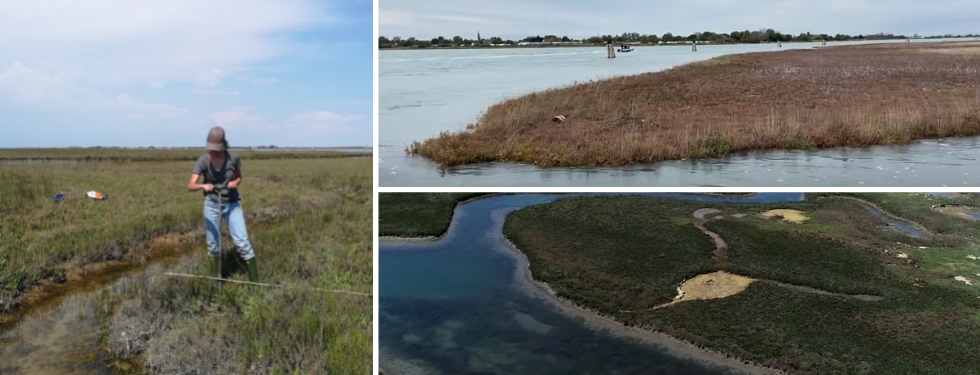Venice Lagoon: Analyzing salt marsh soils in laboratory

Salt marsh soils are able to sequester and store carbon at surprising levels, even higher than those of forests, and therefore perform a very important function in terms of climate change mitigation.
But how is their ability to accumulate carbon calculated? We’ll finding out in this new episode of our mini-series on the Venice Lagoon, together with Alice Puppin, researcher at the Department of Geosciences at the University of Padua.
In fact, we will discover how the analyzes on sediment cores are carried out and how the organic matter content is measured in order to estimate the capacity of salt marshes to sequester and accumulate carbon.
“Our estimates suggest that the salt marshes of the Venice Lagoon may sequester in one year as much carbon as 130 000 trees do, or, in other words, that each 1-square-kilometer plot of salt marsh can absorb the CO2 emissions from 100 cars”, Alice Puppin explains.
“Highlighting salt-marsh great potential for carbon sequestration and storage, we can contribute to a change of vision, suggesting that the conservation of these important ecosystems is an opportunity rather than a cost”, Alice Puppin ends.
Shooting and editing by Barbara Paknazar
Aerial shots with the drone by Stefano Castelli

The previous episodes are available here:
1) Venice Lagoon. The morphology of the largest tidal basin in the Mediterranean
2) Venice Lagoon. The salt marshes and what they need to survive
3) Venice Lagoon. Ecosystem services provided by salt marshes





